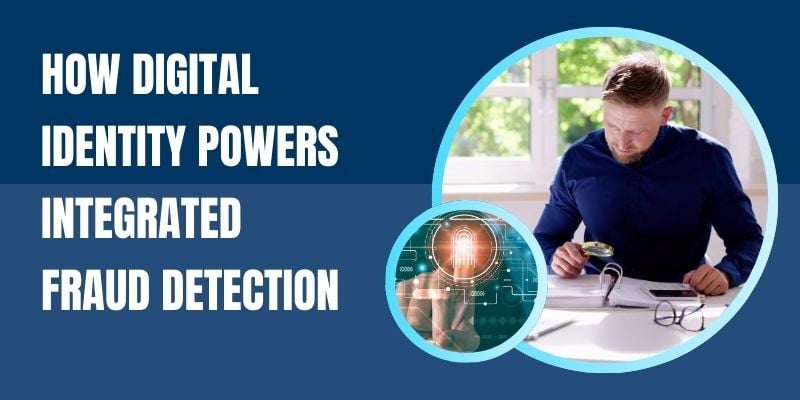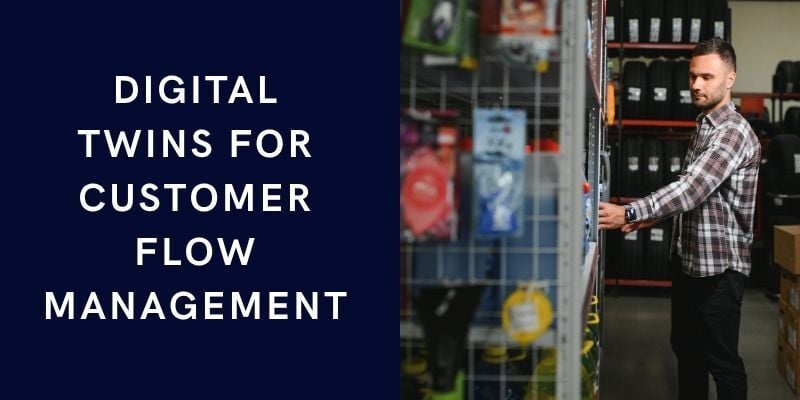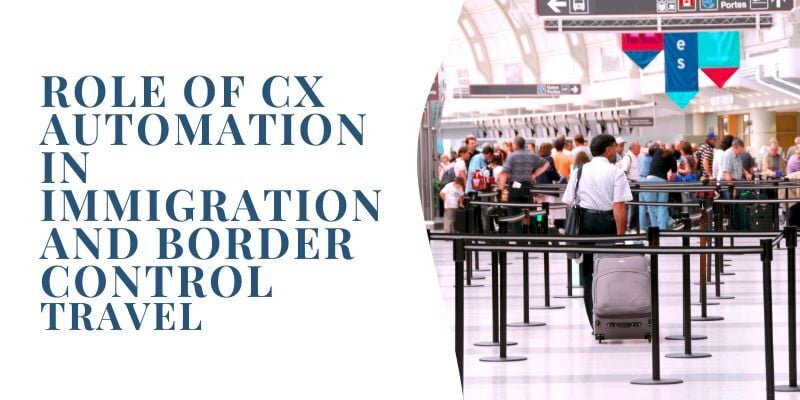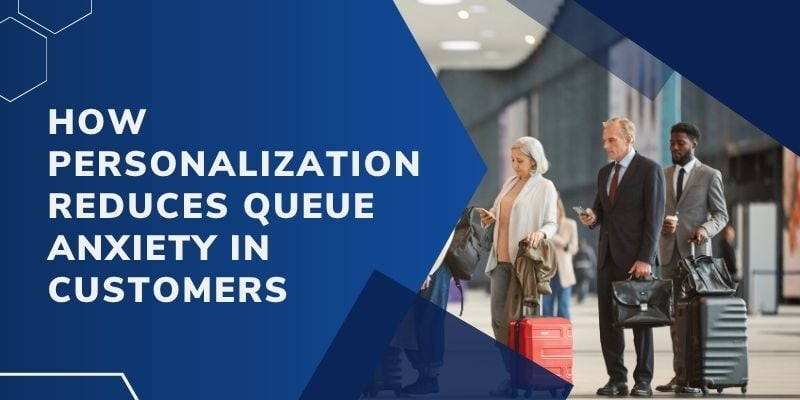Today’s customers value fast, clear, and hassle-free communication with the businesses they trust. Imagine a customer arriving for an important appointment, only to find it has been rescheduled, or a patient waiting without updates on delays.
Similarly, a client who orders products or services online may feel frustrated if there’s no confirmation or tracking information.
These communication gaps can lead to dissatisfaction, lost trust, and missed opportunities for businesses across various sectors, including banking, healthcare, retail, and service-based industries.
One solution that effectively addresses these challenges is SMS. Organizations can improve customer communication with text messaging in a direct, reliable, and easily accessible way.
From appointment reminders and queue updates to order confirmations and real-time alerts, SMS allows businesses to keep customers informed, reduce uncertainty, and minimize wait times.
This approach enhances operational efficiency while creating smoother and more satisfying experiences for customers across various industries.
Why Text Messaging is Crucial for Customer Communication
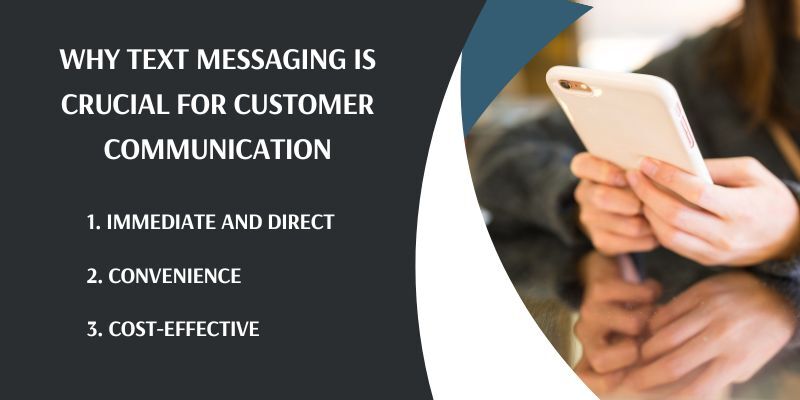
Clear and timely communication is critical to delivering a positive customer experience. Missed updates or delays can frustrate clients and disrupt operations across various industries, including healthcare, banking, and retail.
Text messaging offers a direct and reliable channel for keeping customers informed in real-time, reducing friction, and enhancing satisfaction.
1. Immediate and Direct
Traditional communication methods often fall short in delivering timely updates. Text messages boast an impressive 98% open rate, with 90% of messages read within three minutes.
This speed keeps customers informed at the right time, easing uncertainty and improving satisfaction.
For example, Wavetec’s Virtual Queuing System allows customers to join queues via SMS and receive real-time updates on their status. This improves engagement, minimizes delays, and ensures resources are used more effectively.
2. Convenience
Customers increasingly prefer texting for quick updates or simple inquiries over emails or phone calls. A 2025 report shows that 86% of consumers opt in to receive business texts, highlighting SMS as a trusted and reliable communication channel.
Businesses managing multiple customer touchpoints can use SMS notifications to provide real-time updates on reservations, order statuses, or service availability.
This convenience eliminates unnecessary effort, keeps customers updated, and makes their journey more seamless.
3. Cost-Effective
Traditional communication methods, such as phone calls and print marketing, can be costly and time-consuming. SMS offers a more efficient alternative, delivering timely reminders, updates, and alerts without large investments in call centers or printed materials.
For example, companies can send confirmations, alerts, or limited-time updates via SMS, ensuring critical information reaches customers quickly while lowering operational costs.
By combining SMS with Wavetec’s solutions, organizations can streamline operations and deliver consistent, efficient communication that keeps customers informed and reduces operational friction.
Benefits of Text Messaging for Customer Communication
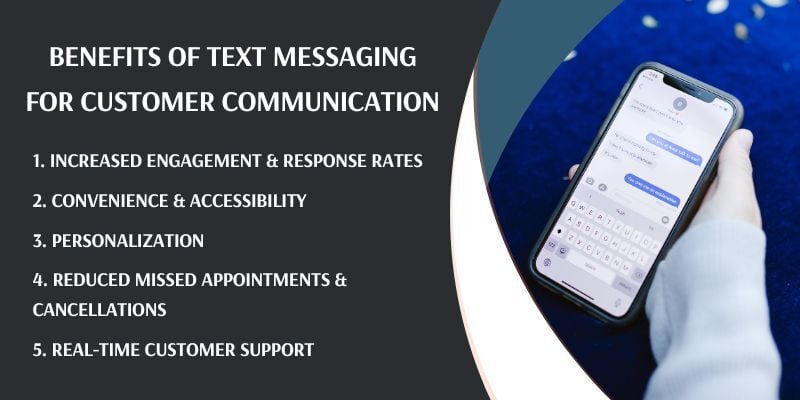
Effective communication is crucial for businesses that handle a high volume of customer interactions. Lack of updates, confusing instructions, or delays can frustrate customers and disrupt service flow.
Text messaging provides a reliable and practical solution, offering multiple advantages that enhance both operational efficiency and customer engagement.
1. Increased Engagement and Response Rates
SMS captures attention quickly. According to the 2024 State of Business Texting Report, 70% of consumers say texting is the fastest way to reach them, and 54% of organizations rate it as the most effective channel for customer response.
By analyzing these interactions, businesses gain valuable insights into customer preferences, helping design smarter campaigns and deliver timely updates that keep audiences engaged.
This highlights one of the primary benefits of text communication for businesses, ensuring messages are read and acted upon immediately.
2. Convenience and Accessibility
Text messaging integrates seamlessly into daily routines. Customers no longer need to wait on hold or log into portals; they can receive confirmations, reminders, and updates anytime, anywhere.
For example, Wavetec’s Virtual Queuing sends SMS alerts when it’s a customer’s turn, allowing them to arrive just in time. This reduces wait times while ensuring workflows remain smooth and uninterrupted.
3. Personalization
Generic messages are often ignored, but personalized text messages in customer service create meaningful connections.
By using customer data, such as past behavior, preferences, or appointment history, businesses can send tailored reminders, confirmations, and notifications.
For instance: “Hi Sarah, your appointment at Main Branch is confirmed for 3:00 PM. Reply 1 to confirm or 2 to reschedule.”
This approach ensures messages feel relevant, encourages engagement, and helps businesses stay efficient while improving customer satisfaction.
As Dale Carnegie observed: “When dealing with people, remember you are not dealing with creatures of logic, but with creatures of emotion.” Personalization speaks directly to this emotional need, making customers feel acknowledged and valued.
4. Reduced Missed Appointments and Cancellations
No-shows and missed service slots can disrupt both customer experience and business operations. Automated SMS reminders help mitigate this challenge.
A strong example comes from Orange Sierra Leone, where long queues and missed service slots were a challenge for both customers and staff.
Wavetec’s Virtual Queuing System solved this by sending real-time SMS updates and confirmation texts, allowing customers to manage their place in line remotely and arrive just in time.
The outcome was smoother service flow, fewer missed appointments, and an improved customer experience, demonstrating how text messaging can transform everyday interactions.
5. Real-Time Customer Support
Text messaging enables customers to ask questions and receive prompt replies without waiting for calls or emails.
Automated responses can handle routine queries, while complex issues are escalated to staff, ensuring fast, reliable, and documented support for every interaction.
How to Implement Text Messaging in Customer Communication
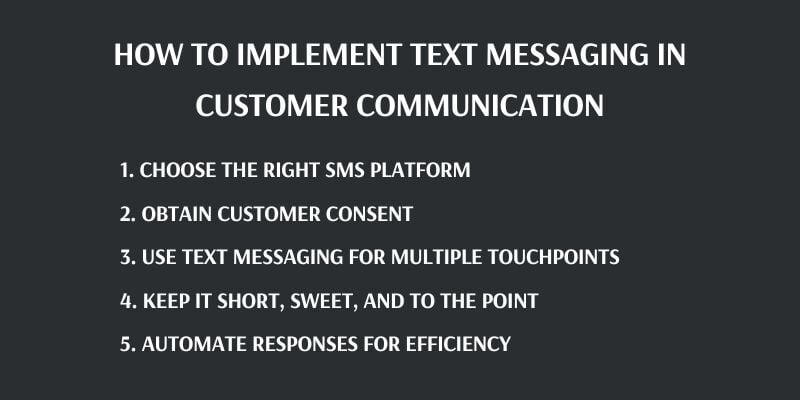
Implementing SMS successfully is more than just sending messages. It involves choosing the right platform, respecting customer preferences, and integrating text seamlessly into the service journey. Done correctly, it can reduce wait times and optimize operations.
1. Choose the Right SMS Platform
Selecting a platform customized to your needs is essential. Whether managing appointment notifications, queue updates, or service alerts, the system should integrate smoothly with your CRM or notification tools to avoid operational silos.
For example, healthcare providers often prioritize automated reminders, while banks and telecoms require flexible options for high-volume campaigns.
Platforms with built-in reporting enable the monitoring of engagement, refining messaging strategies, and improving customer engagement with SMS in real-time.
2. Obtain Customer Consent
Transparency and consent are critical. Customers engage more with SMS when they trust that their data is secure. Explicit opt-in consent, clear explanations of message types and frequency, and easy opt-out options are essential.
According to PwC’s Voice of the Consumer Survey 2024, 83% of consumers cite data protection as key to trust. By collecting consent properly, businesses not only comply with regulations but also encourage more responsive interactions.
3. Use Text Messaging for Multiple Touchpoints
SMS should be embedded at every relevant stage of the customer journey, from transactional updates like order confirmations and shipping notifications to appointment reminders and promotional messages.
Wavetec’s Virtual Queuing and Queue Management Systems (QMS) send SMS notifications when it’s a customer’s turn. This allows customers to arrive just in time, making the process more convenient and ensuring smoother service overall.
4. Keep It Short, Sweet, and To the Point
Text messages are most effective when concise. Customers respond better to direct instructions than long paragraphs.
Example: “Your appointment is confirmed for 3:00 PM. Reply 1 to confirm or 2 to reschedule.”
Short, actionable messaging reduces confusion, ensures faster responses, and strengthens customer service via text messaging by keeping interactions relevant and personalized.
5. Automate Responses for Efficiency
Automation enables businesses to handle routine inquiries such as operating hours, order status, or FAQs without manual effort. This reduces wait times and frees staff to address more complex needs.
Mapping frequent queries to automated responses and integrating SMS with existing systems ensures accuracy, while personalizing messages with names, appointment details, or queue positions enhances the customer experience.
This approach ensures smooth and efficient service for both customers and staff.
How Text Messaging Enhances Customer Service
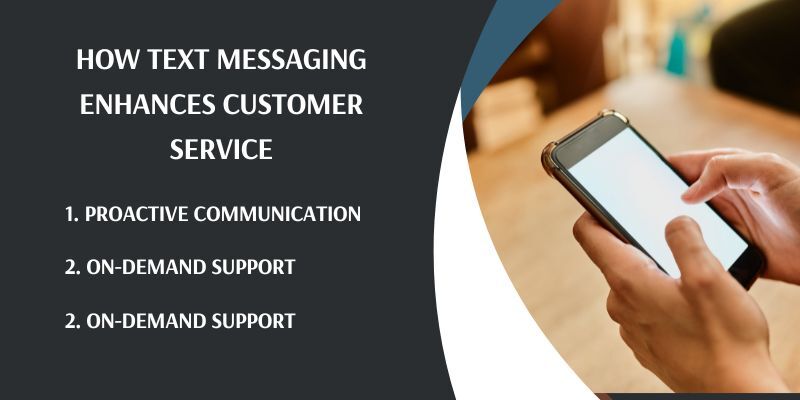
Customers today expect timely, transparent, and convenient communication. Text messaging provides a personal channel that enables businesses to meet these expectations while maintaining efficient processes.
1. Proactive Communication
Keeping customers informed about delays, schedule changes, or service updates helps manage expectations and reduces frustration. SMS notifications allow businesses to provide timely updates clearly and concisely.
For example: “Your appointment at Main Branch is confirmed for 3:00 PM. If you need to reschedule, please contact us.”
Proactive messaging helps maintain trust, reduces uncertainty, and can decrease the number of routine support inquiries by addressing common questions before customers need to ask.
2. On-Demand Support
Text messaging offers a convenient way for customers to receive information quickly. Customers can access updates, confirmations, or instructions without waiting on hold or navigating email systems.
Automated SMS can provide answers to frequently asked questions, while more complex inquiries are handled by staff, ensuring faster response times.
This documented communication trail enables businesses to track interactions and maintain consistency in their customer support.
3. Post-Service Feedback
Collecting feedback via SMS encourages higher participation compared to email surveys. Short messages make it easy for customers to share opinions.
For instance, after a service:
“Hi Sarah, how was your visit today? Reply ‘Excellent,’ ‘Good,’ or ‘Needs Improvement.'”
Acting on this feedback allows businesses to identify areas for improvement quickly and strengthen customer relationships, closing the loop between communication and operational efficiency.
Compliance and Best Practices for Text Messaging
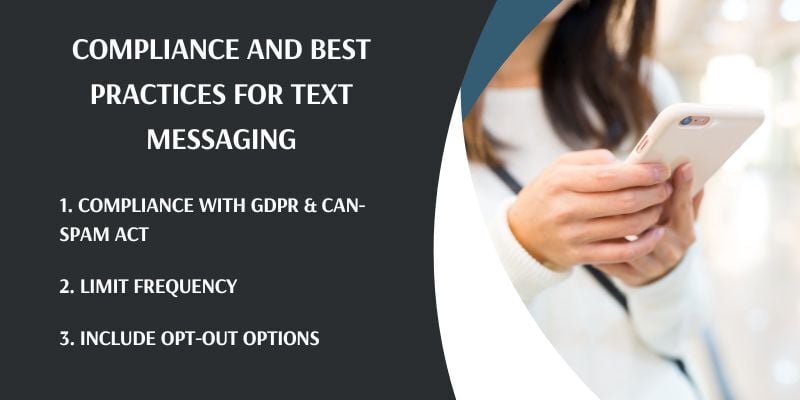
SMS for customer communication is highly effective, but its success depends on adhering to legal standards and best practices. Non-compliance can result in fines, reputational damage, and loss of customer trust.
Businesses that prioritize compliance reduce risk, maintain credibility, and ensure positive engagement with customers.
1. Compliance with GDPR and CAN-SPAM Act
Before sending marketing messages, businesses must secure clear, written consent from recipients. This can be achieved through a double opt-in process, ensuring that customers are fully aware of what they are subscribing to.
For instance, sending an initial confirmation message asking recipients to reply with “YES” to opt in. This practice aligns with regulations such as the Telephone Consumer Protection Act (TCPA) in the US and the General Data Protection Regulation (GDPR) in Europe.
Wavetec’s systems are fully GDPR-compliant, ensuring customer data is protected while supporting compliant messaging practices.
2. Limit Frequency
Avoid sending messages too frequently, as this can lead to opt-outs and reduce engagement. Balance is key: ensure communications are timely, relevant, and non-intrusive.
Monitoring customer engagement and feedback helps determine the best messaging cadence while keeping interactions positive.
3. Include Opt-Out Options
Every marketing message should include an easy way for recipients to unsubscribe. This could be as simple as replying with “STOP” or including an unsubscribe link in the message.
Ensuring that opt-out requests are processed promptly is not only a legal requirement but also demonstrates respect for customer preferences.
Measuring the Effectiveness of Your Text Messaging Campaigns
Tracking key metrics is crucial for evaluating the performance of SMS campaigns. Open rates, click-through rates (CTRs), and conversion rates reveal which messages resonate with customers and which may need adjustment.
For example, a retail chain might find that promotional messages sent in the morning receive higher engagement than evening notifications, which can guide future campaigns.
Conversion rates vary by industry, ranging from 21% to 40%, highlighting the effectiveness of SMS in driving sales, confirmations, and other desired actions.
Businesses can further enhance results by segmenting audiences, timing messages based on behavior, and testing variations to identify the most effective approaches.
Continually analyzing these metrics ensures campaigns remain impactful, drive higher response rates, and maximize ROI.
Conclusion
Text messaging offers a direct and cost-effective means of keeping customers informed and engaged. Timely updates, reminders, and notifications prevent missed appointments and make interactions easier and more efficient for both customers and staff.
Clear and concise messages ensure that information is delivered efficiently, supporting smoother daily operations.
For organizations managing queues or high volumes of customer interactions, integrating Wavetec’s Virtual Queuing System with SMS notifications helps streamline service flow, reduce frustration, and improve overall satisfaction.
Explore Wavetec’s solutions now to enhance your customer communication strategy and deliver a seamless experience.
BOOK A FREE DEMO
